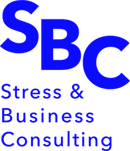DECISION MAKING
When making a decision very seldom do we think of the different elements that are involved in the decision making process. Decisions have measurable uncertainty and unmeasurable uncertainty. Measurable uncertainty also called risk, is a decision where the probabilities of potential outcomes are known or can be estimated. The second type of uncertainty is unmeasurable uncertainty or ambiguity which we do not know the probabilities and cannot estimate those outcome probabilities. A client may also have ambivalence or a resistance to change that impedes the decision making process. The process of thoughts, feelings, and emotions must also be evaluated. The use of the following models are used by this firm, though not all inclusive. Even though George Engel's biopsychosocial model is an expansion of the medical model, this model is taken into account with the decision making process. In recent times cultural and spiritual elements have been added. It is only common sense that elements in this model has an affect on our decisions.

